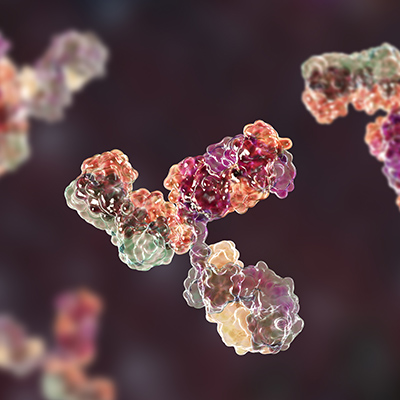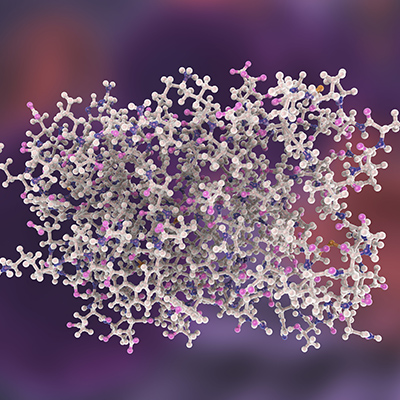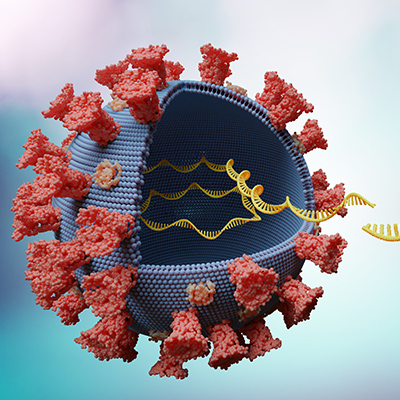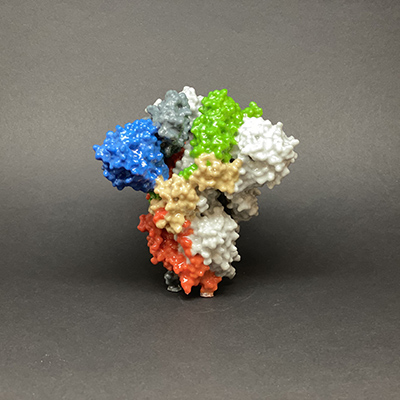May 19, 2020 -- Two human deaminase enzymes that edit viral RNA inside cells could have implications for the evolution of SARS-CoV-2 and the spread of the infection, according to a study published in Science Advances on May 18.
Emerging viral infections are obligate intracellular parasites, meaning they cannot reproduce outside their home cell, and organisms have evolved immune processes to sense and defend against them. One such mechanism is RNA and DNA editing mediated by endogenous deaminases. These enzymes alter the basic nucleotide building blocks (amino groups) from their nucleobase components.
Adenosine deaminases acting on RNA (ADARs) are double-stranded RNA-specific adenosine deaminases that target double-stranded RNA (dsRNA) and convert adenosine to inosine by deamination, thereby rendering RNA unstable. During viral infection, ADARs act directly through hypermutation of viral RNA or indirectly through host transcripts that modulate cellular responses.
Alternatively, proteins known as "apolipoprotein B mRNA editing enzymes, catalytic polypeptide-like" (APOBECs) target viral genome via DNA intermediates to interfere with reverse transcription. APOBECs are apolipoprotein B mRNA editing enzymes that deaminate cytosines to uracils on single-stranded nucleic acids (ssDNA and ssRNA).
However, it is still unclear whether these innate virus-counteracting processes function against coronaviruses, specifically SARS-CoV-2.
To assess whether RNA editing may be involved in the response to SARS-CoV-2 infections, Italian researchers analyzed single-nucleotide variants in RNA sequencing datasets from bronchoalveolar lavage fluids extracted from the lungs of COVID-19 patients.
The number of single-nucleotide variants that the researchers observed in the samples were comparable with mutation rates observed in coronaviruses and commonly associated to the RNA-dependent RNA polymerase (RdRp). The lower mutation rate may be attributed to the nsp14-ExoN gene that provides error correction.
The researchers did identify nucleotide changes: adenosine to guanine derived from deamination of adenosine to inosine mediated by ADARs and cytosine to thymine derived from APOBEC-mediated cytosine to uracil deamination. Because ADARs target dsRNA, the most likely source of dsRNA in viral transcripts is during replication where both positive and negative strands are present.
With regard to APOBEC-mediated RNA editing, the researchers suggested that because this type of editing is almost undetectable in human tissues, it could be effective against viral species, including SARS-CoV-2. Cytosine to uracil changes leading to stop codons were overrepresented in transcriptomic data but were not present in the genomic data, suggesting an antiviral role in the editing enzyme.
To better understand if RNA editing could be the cause of mutations acquired through evolution, the researchers also compared the genomes from SARS-CoV-2 to MERS-CoV and SARS-CoV. They found that a substantial fraction of the mutations in all strains could be derived from enzymatic deamination with a high level of cytosine to uracil mutations that is compatible with APOBEC-mediated editing.
Lastly, the researchers speculated that genetic variations of the APOBEC gene that result in a deletion polymorphism of the APOBEC enzyme (common in the Chinese population) could play a role in the spread of coronavirus infections.
Do you have a unique perspective on your research related to virology or molecular biology? Contact the editor today to learn more.
Copyright © 2020 scienceboard.net










